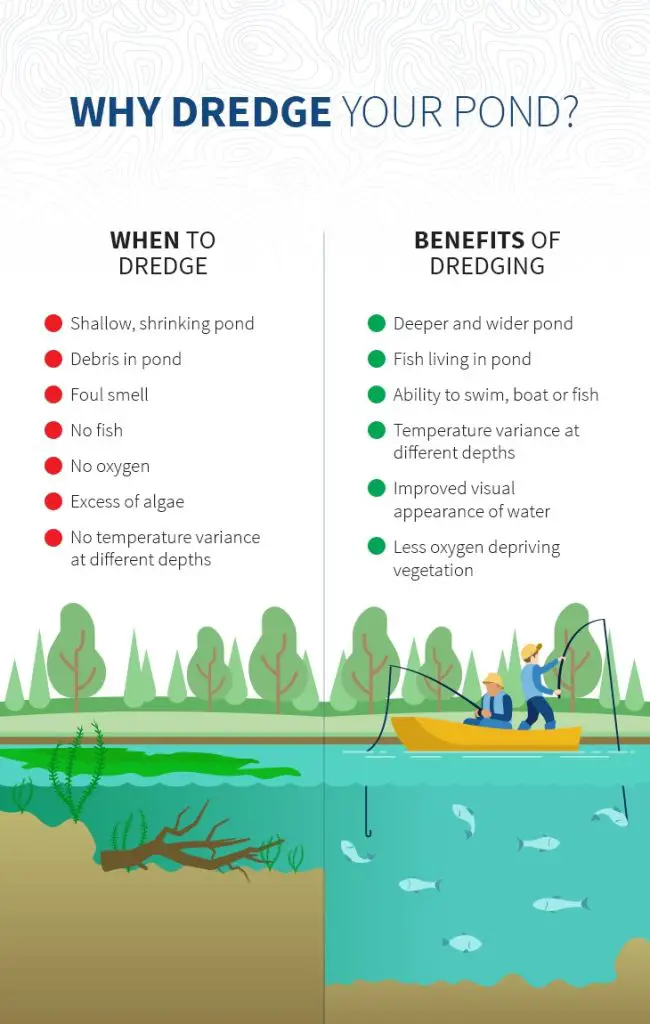Are you looking to build a pond dredge to keep your pond clean and healthy? A pond dredge is a valuable tool for removing silt, debris, and unwanted vegetation from your pond, helping to maintain its ecological balance. In this comprehensive guide, we will walk you through the step-by-step process of building your own pond dredge, allowing you to take control of your pond maintenance and ensure its long-term health.
Materials and Tools
Before you begin building your pond dredge, it’s essential to gather all the necessary materials and tools. Here’s a list of what you’ll need:
- Steel pipe
- Steel mesh
- Steel cable
- Steel rods
- Steel sheets
- Winch
- Welding machine
- Drill
- Saw
- Measuring tape
- Marker
- Safety goggles
- Work gloves
Step 1: Designing the Dredge
The first step in building a pond dredge is to design the dredge itself. You’ll need to determine the size and shape of the dredge based on the dimensions of your pond and the amount of debris you need to remove. Consider the depth of the pond and the type of vegetation or silt you’re looking to remove. Once you have a clear design in mind, you can move on to the next step.
Step 2: Cutting and Welding
Using the steel pipe, mesh, rods, and sheets, begin cutting and welding the components together to form the frame of the dredge. The frame should be sturdy and durable to withstand the rigors of dredging. Ensure that all welds are strong and secure to prevent any accidents during use.

Credit: suertegold.wordpress.com
Step 3: Attaching the Mesh
Once the frame is constructed, attach the steel mesh to the bottom section of the dredge. This mesh will serve as the net for capturing debris and vegetation as you drag the dredge across the pond bottom. Make sure the mesh is securely fastened to the frame to prevent any tearing or damage during operation.

Credit: www.youtube.com
Step 4: Installing the Winch
Next, install the winch onto the dredge. The winch will provide the pulling power needed to drag the dredge through the pond and collect the debris. Secure the winch to the frame and ensure that it is in proper working condition before moving on to the next step.
Step 5: Adding the Cable
Attach the steel cable to the winch, making sure it is tightly wound and properly secured. The cable will be the connection between the dredge and the winch, allowing you to control the movement of the dredge as it collects debris from the pond bottom.
Step 6: Testing and Adjusting
With the basic construction of the pond dredge complete, it’s time to test the dredge in a controlled environment. Lower the dredge into a shallow area of water and operate the winch to drag it across the bottom. Observe how the dredge performs and make any necessary adjustments to ensure optimal functionality.
Step 7: Safety Precautions
Before using the pond dredge in your actual pond, it’s crucial to review and implement safety precautions. Ensure that all components are securely fastened, the winch is in good working order, and that you have appropriate safety gear such as gloves and goggles. Safety should always be a top priority when operating any machinery near water.
Step 8: Using the Pond Dredge
Once you have completed the construction and testing of your pond dredge, it’s time to put it to use in your pond. Carefully lower the dredge into the water, ensuring that the winch cable is securely attached and that you have a clear path for dredging. Operate the winch to drag the dredge across the pond bottom, collecting debris and maintaining the cleanliness of your pond.
Benefits of Pond Dredging
Regularly dredging your pond offers numerous benefits, including:
- Improving water quality
- Preventing the accumulation of silt
- Removing excess vegetation
- Enhancing the overall health of the pond ecosystem
By building and using a pond dredge, you can ensure that your pond remains a vibrant and thriving environment for aquatic life while also creating a visually appealing feature on your property.
Conclusion
Building a pond dredge is a practical and rewarding project that can significantly impact the health and appearance of your pond. By following the step-by-step process outlined in this guide, you can construct a durable and effective pond dredge that will enable you to maintain the cleanliness and ecological balance of your pond for years to come.
Remember to prioritize safety at all times when building and operating your pond dredge, and be sure to conduct regular maintenance to keep the dredge in optimal working condition. With your homemade pond dredge, you’ll have the power to effectively manage the maintenance of your pond and enjoy its beauty for years to come.





